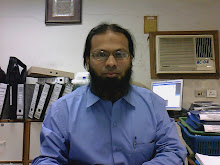 Voters in four states encounter land mines and gunfire at polling sites. The general election, staggered over a month, is a vast task, and a tempting target for insurgents fighting the government.
Voters in four states encounter land mines and gunfire at polling sites. The general election, staggered over a month, is a vast task, and a tempting target for insurgents fighting the government.Reporting from New Delhi - India's first day of voting in a monthlong election got off to a rocky start Thursday as militants attacked polling efforts in four states, killing at least 17 people.
India's multiphase general election, as ambitious and complex as the nation itself, is a massive undertaking involving 714 million eligible voters using 1.3 million voting booths in more than 823,000 polling sites.
Although India is no stranger to violence between rival political groups, the sheer scope of the balloting effort also makes elections a tempting target for groups fighting the government, seeking autonomy or keen on building publicity for their cause, analysts said.
The attacks took place in several voting districts in the eastern part of India known as the "red belt," a stronghold for the Maoist Naxalite groups that have tried for decades to overthrow the government and establish a communist replacement. In separate incidents in Chhattisgarh state, a land mine killed five polling officials, two paramilitary soldiers died in a gunfight, and five polling stations came under fire, according to local media reports.
In neighboring Jharkhand state, six border guards, a bus driver and his assistant reportedly died on their way to an election center in another land mine explosion. And in various incidents in Bihar and Orissa states, militants killed two security officials, fired on polling stations, destroyed voting machines and attacked vehicles.
Although it's easy to wrap these latest attacks into the broader regional struggle against Al Qaeda and the Taliban, that would be an oversimplification, said Praful Bidwai, an independent political analyst. The Naxalites, named after a village where the struggle started in 1967, have flourished in some of the poorest areas of India for decades in part because the government has fallen far short of its objectives, he said. And there's no history of the rebels targeting civilians, he added.
"The government says it has a two-pronged strategy, securing hearts and minds and putting down violence with a heavy hand," Bidwai said. "In fact, it's a single prong, the mere use of force. Helicopter gunships are not going to do it."
Prime Minister Manmohan Singh has characterized Maoist violence as India's biggest internal security threat. "The Maoist violence is a grave challenge before the country," Ashwini Kumar, spokesman for the ruling Congress Party, said after Thursday's attacks.
But analysts said the government has done little to address the underlying causes -- corruption, vigilante justice, extreme poverty and incestuous relations between local police and landlords -- that have fueled the movement in the impoverished region.
Suhas Chakma, director of the Asian Center for Human Rights, which monitors Naxalite violence, said the attacks were successful even though Indian security forces were on high alert after the Maoists threatened to disrupt polling.
"It's clear the Maoists have gained the military capacity to strike the security forces at will," said Chakma, who estimates that the conflict has killed 1,000 people annually in recent years. "In areas where the Maoists are strong, the government is confined to the main roads. And none of the government's programs to eradicate poverty have been effective, even though they say they're successful."
Over the last four decades, the Naxalite movement has splintered. Analysts said it was unclear whether Thursday's attacks were well coordinated or the result of diverse cells going after an obvious target.
The outlawed Communist Party of India-Maoist, the group's political arm, has routinely called on supporters to boycott all elections.
http://www.chicagotribune.com/news/nationworld/la-fg-india-attack17-2009apr17,0,2535331.story



